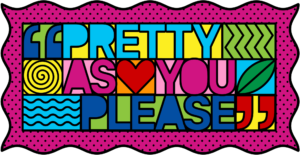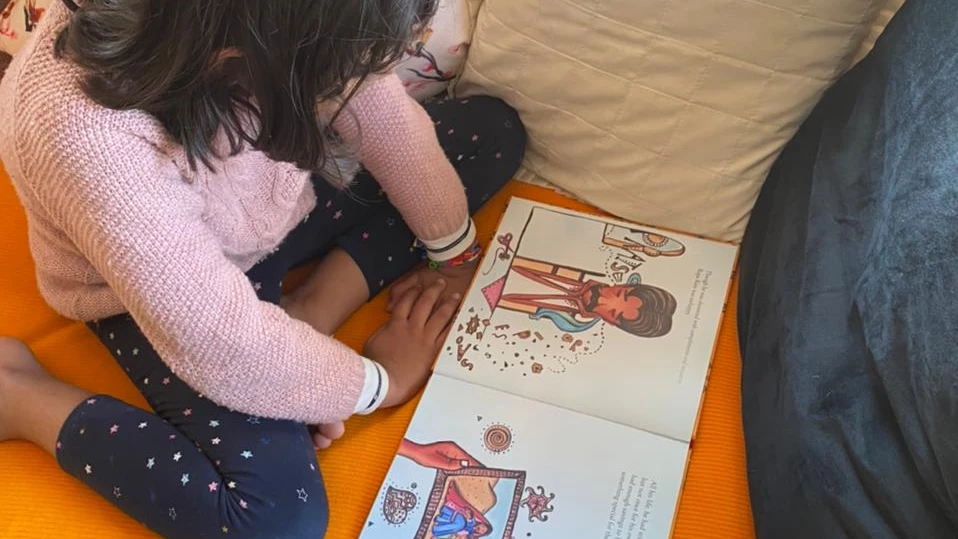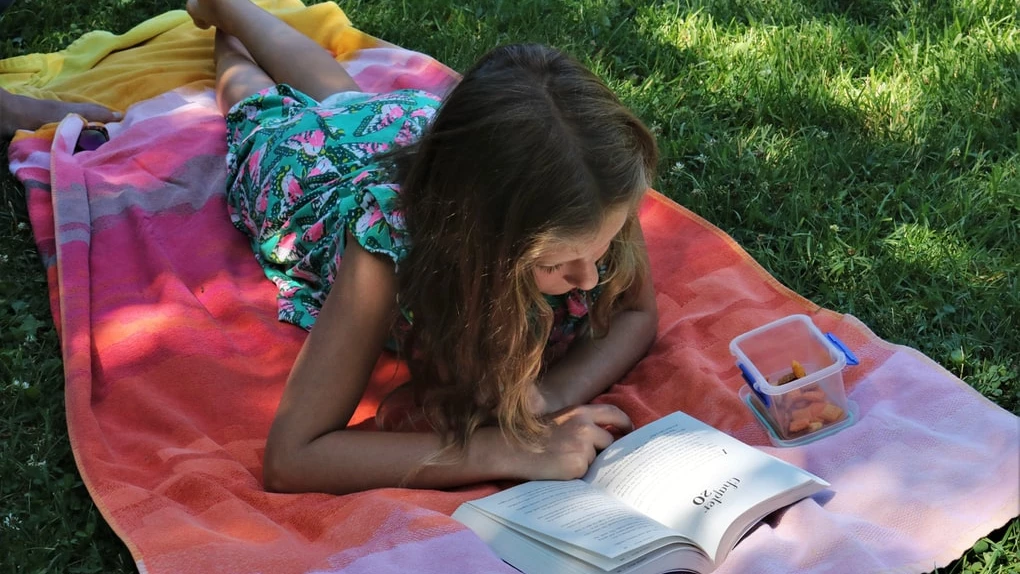INTRODUCING YOUR CHILD TO SUSTAINABILITY

There was a time we went about getting new clothes without visiting websites or showrooms, comparing costs, design and fit. Instead, there was the joy of buying running cloth, sometimes with a style in mind, sometimes because it caught our fancy, which would then lie in our cupboard till we needed to get something new stitched. Or maybe, it was an old sari, or a sibling’s old kurta that would suddenly inspire a wave of ingenuity. Then would come the visits to our favourite tailor, arguing over what we wanted vs what they thought was the best style that could be wrought of the cloth, whining over the delivery date, and then the multiple visits for the final fit. And when our outfit was ready, we would spend time caressing every pleat, every stitch lovingly, inhaling its just ironed smell and the mustiness from the tailor shop, because what we held in our hands was one-of-a-kind, handmade especially for us.
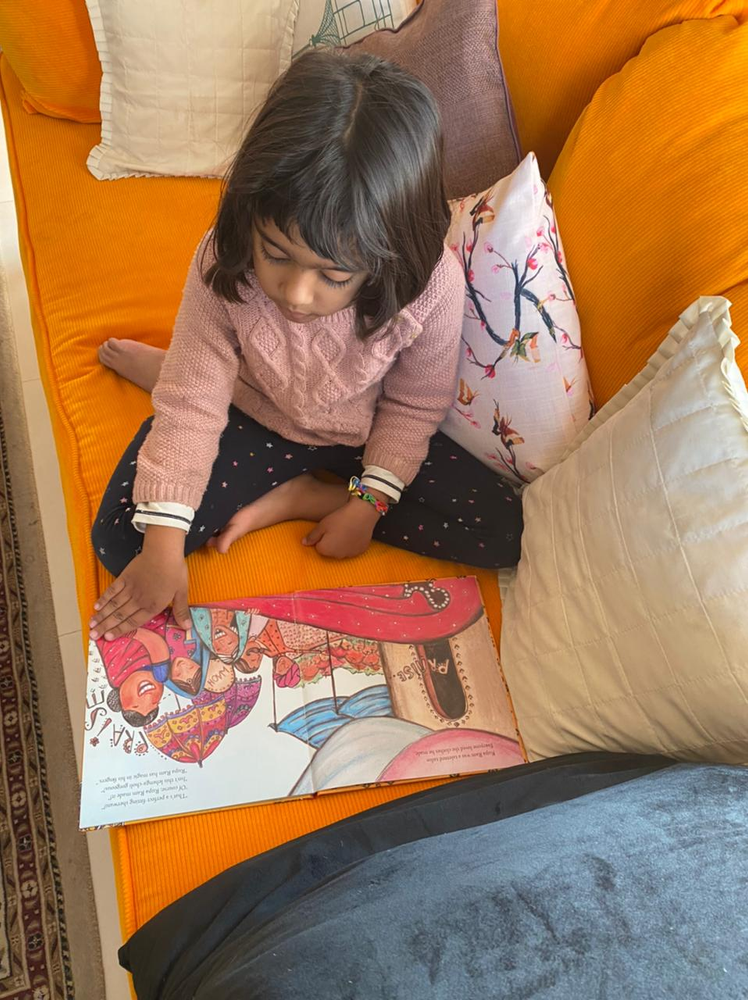
As we rethink our fashion choices and consumption patterns, we fret for our children as we hope for better, greener, more conscious decisions by them. But while we may want them to experience the joy we felt in our one-of-a-kind clothes, we must push the envelope further, and visibilise the makers of our clothes. This will, doubtless, open a Pandora’s box, replete with extremely uncomfortable but relevant discussions on socio-economic differences that define our social fabric and how they impact our everyday life. For, you see, environmentally-conscious decisions have as much to do with the social environment, as with the physical. And so, it is imperative to understand social structures, as they exist and weave themselves into our interactions with people and ideas.
The Clever Tailor, by Srividhya Venkat and illustrated by Nayantara Surendranath, is an Indian adaptation of a European folktale, though it is a story that seems quite at home in India! The heartwarming book will let you have fun with your child, while creating a safe space to talk about complex ideas. Be assured, your child is ready for it. Studies have shown them to be more resilient, predisposed to sensitivity, with an innate ability to process non-tangible realities, than we would believe them to be.
The book starts by introducing us to Rupa Ram, who is held to be a very talented tailor, capable of stitching the ‘perfect-fitting sherwani’ and a gorgeous lehenga choli. It is universally declared that Rupa Ram has ‘magic in his fingers’.
But Rupa Ram is unhappy because he never seems to have enough savings to buy the best cloth to weave his magic into clothes for this family.
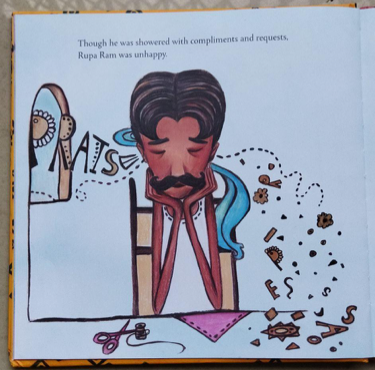
So when Rupa Ram receives a brand new saafa at a wedding, and it starts to wear out, instead of discarding it, he makes an odhni for his wife, which is made into a kurta when the odhni wears out and, well you just have to read to see what other things he is able to make out of that one piece of cloth!
On the face of it, the story of The Clever Tailor is about Rupa Ram recycling a piece of cloth, one which still has much to give even when it seems to wear out. But it is also about Rupa Ram’s love for his family, which drives him to innovate and fashion out the very thing each family member will love and enjoy. This is one reason why we suggest you read it with your young child – 3 to 5 years- as many times as they would like to read it. But here are some more reasons, in no particular order.
INTRODUCING YOUR CHILD TO ECO-LEARNING
In a world of fast fashion, defined by use and throw, it is very tempting to discard something once it has outlived its use, is no longer in vogue or which we’re simply bored of. Eco-living urges us to stop and pause for a while, and rethink these choices we make. Simply said, the story can help you find a wonderful way of initiating a conversation against the throwaway culture we are surrounded by. But instead of leaving it at that, find time and space to actually involve your child in refurbishing old clothes.
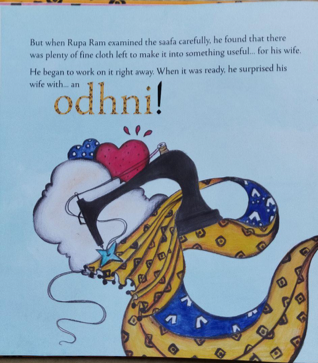
CONVERSATIONS AROUND THE LIVES OF THOSE WHO MAKE OUR CLOTHES
The story is a wonderful venture into the life of the people who make the clothes we wear, though we urge you not to stop there!
Take the conversation to your own closets. Who does your child believe made their favourite dress, what is the story behind how it was visualised and designed? When we talk about ethical buying and conscious fashion, we’re talking as much about the human environment as the physical environment. Do you know if those who made your garments have been actively acknowledged and fairly remunerated for their effort? Give a voice and a face to the maker and the tailor!

CONCEPTS OF JUSTICE AND FAIRNESS
As you read this book with your child, use it to talk about Rupa Ram, his circumstances and the difficult decisions he probably has to make on a daily basis. The fact that Rupa Ram doesn’t have a lot of money to spare to buy cloth for his family, is telling of the unfairness of the world we live in. Ask your child, what they think is the reason for Rupa Ram to not have enough money, and where do they think he is spending his earnings?
But rather than making sentimental, potentially-condescending statements about ‘poor’ Rupa Ram, it would be more fruitful to use this as an opportunity to introduce your child to the very difficult idea of rights, fair pay and what needs to be done to create a more equal world. Early years are key to helping a child develop sensitivity and a window into the socio-economic class structures. We are sometimes compelled to don the super saviour cloak of wanting to uplift the poor. But our actions can go deeper towards creating spaces for challenging hegemony by understanding it in its entirety.
Research indicates that children have a strong sense of fairness and justice. In ,Talking to Children about Gender and Identity, we urged our readers to not wait for a right age to introduce ideas about identity, gender, and sex. In the same way, we suggest not to wait till middle school years to talk about justice.
Talk about access to education with your child, for instance. If you are lucky, your child may already start talking about social change to ensure everyone gets access to the education they deserve!
COMPELLING STORYTELLING
The bold, vibrant colours make the book attractive and draw the child into the story. As the piece of the saafa flows, so does the story, inviting us to slide and bounce on it as it binds Rupa Ram’s family together.
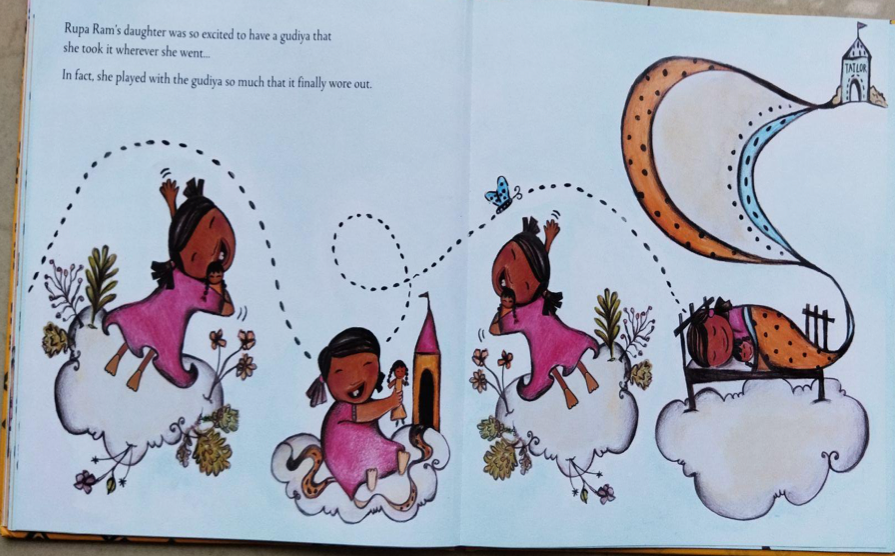
Children will love following the piece of fabric with their fingers, and see a part of themselves reflected in what Rupa Ram and his family do every day. For instance, how the daughter takes her little gudiya everywhere with her is reminiscent of children, no matter where, carrying their toys and dolls with them into the toilet, on trains, buses and aeroplanes, making them sit next to them during meal times, and imagining them as important family members. Books can act as a window to a life unknown to us, while being a mirror to our own experiences. The Clever Tailor does both, in a simple and rather appealing way. It reminds us that there are things greater than a material possession, and that ideas, love, and stories are as real if not more than the mere tangible.
. . .

